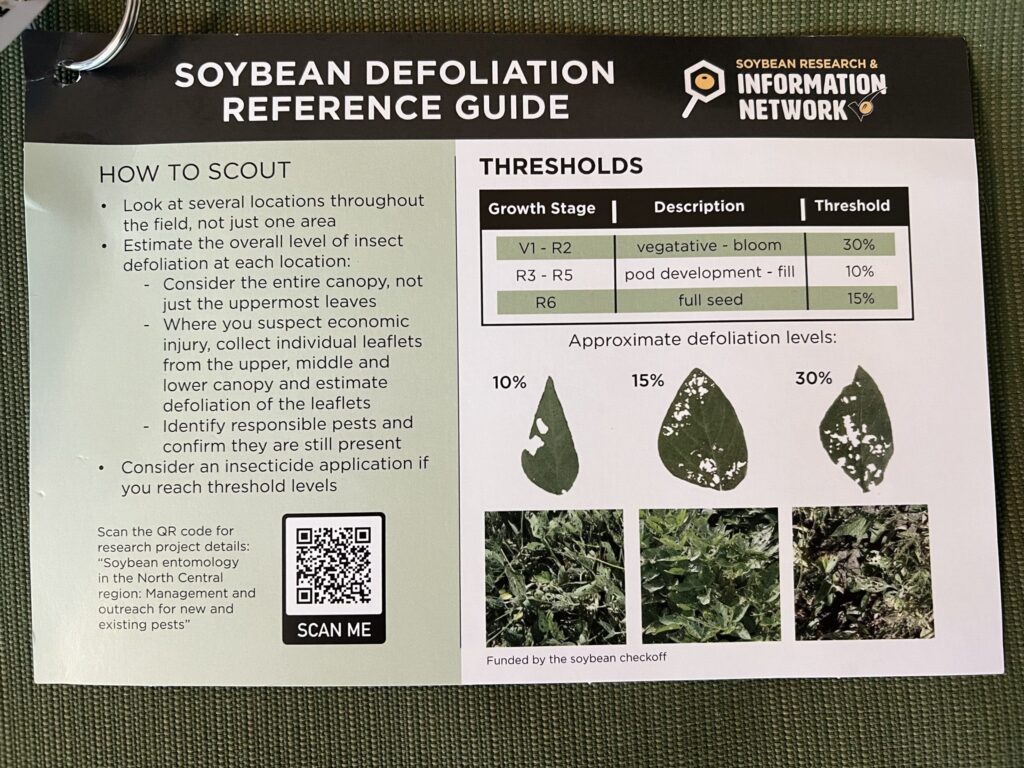When scouting soybeans and deciding when to spray fungicide applications, we want to first check the growth stage of the soybeans across the field. The soybean growth stage of R3, in at least half of the field, is the recommended growth stage to apply a fungicide. Often, we also check the insect pressure and if warranted, an insecticide is often applied at the same time.
Determining the Soybean R3 Growth Stage
Go to the top of the main stem of a soybean plant and find the most developed trifoliate leaf. From there, go down to the node and count it and then 3 more down the main stem of the plant. If there is a tiny soybean pod at least 3/16 inch long (but less than .75 inch or ¾ inch long) at one of those four upper nodes on the main stem, then the soybean plant is in the R3 growth stage or pod development.
It is important to correctly identify the soybean fungal disease at growth stage R3, so that you can determine what fungicide mode of action groups will provide the best fungicide efficacy to achieve maximum disease control. The North Central Regional Committee on Soybean Diseases has developed information on foliar fungicide efficacy for control of major foliar diseases. These efficacy ratings are based upon the level of disease control achieved by the product and are not necessarily reflective of yield increases achieved by the product application. Efficacy will depend on the right application timing, rate, and method of application and this is outlined in product label instructions to achieve the optimum effectiveness of the fungicide.
If insect damage is present, you also want to make sure that there are still insects actively feeding within the soybeans to determine if you should spray or not. We refer to the Soybean Defoliation Reference Guide (SRIN) to determine if we have reached defoliation levels across the field. At R3 – R5 growth stages (pod development through grain fill), the threshold for insect defoliation is 10 percent throughout the plant canopy.
The video below shows how to determine if a soybean plant is at the R3 growth stage as well as how to check for diseases such as Septoria brown spot and insect damage.



 and then
and then